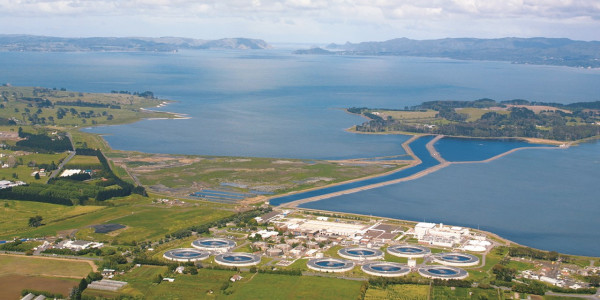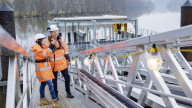Better connections, faster commutes and safer journeys.
We’re helping build a better New Zealand by enhancing, extending and maintaining transport infrastructure.

The Snells Beach Wastewater Treatment Plant, being delivered under the Watercare Enterprise Model (WEM), displays Brian Perry Civil's capabilities in delivering complex and vital infrastructure projec...
The Snells Beach Wastewater Treatment Plant, being delivered under the Watercare Enterprise Model (WEM), displays Brian Perry Civil's capabilities in delivering complex and vital infrastructure projects. This job will bring a new, modern, and efficient wastewater treatment plant to the Warkworth and Snells-Algies communities. Designed to cater to population growth over the next 35 years, the plant will ensure the highest standards of wastewater treatment while safeguarding the local environment.
By safely discharging treated water through the new outfall off Martins Bay, the Snells Beach Wastewater Treatment Plant will contribute to a significant improvement in the local ecosystem. The project's success will be marked by the decommissioning of the existing plant, bringing an end to its discharges into the Mahurangi River and harbour.
Construction commenced in early 2022. The project presents various challenges that demand a highly collaborative approach. Brian Perry Civil, alongside Watercare, consultants, and suppliers, is navigating the project's complexities to ensure its timely and successful completion.
| Client | Watercare Services Ltd |
|---|---|
| Completed | Under construction |




Situated in the heart of Wellington, this intricate project involves the construction of the new pump station and connection to the existing wastewater network in Dixon Street and Taranaki Street, red...
Situated in the heart of Wellington, this intricate project involves the construction of the new pump station and connection to the existing wastewater network in Dixon Street and Taranaki Street, redirecting flows into the new pump station and then providing an outlet connection to the future Taranaki Street rising main.
In terms of size: the pump station is to be 10.88m external diameter and 8.66m internal diameter with a floor level approximately 8.5m below ground, which includes the installation of 42 x 900mm diameter secant piles 19m below ground level to form the new pump station’s superstructure.
The works are required to address the existing undersized and aging wastewater network issues and in particular, to reduce pressure on the existing network, accommodate growth and provide resilience for Wellington's critical wastewater infrastructure.
| Client | Wellington Water Limited |
|---|---|
| Budget | $7 million |
| Completed | Under construction |




Under construction by Brian Perry Civil, this 52m long Network Arch Bridge (NAB) will carry a new pipe over the Te Awa Kairangi (Hutt River). The pipe bridge conveys water from the Hutt River Kaitoke intake to the Te Marua Storage lakes. The existing flume bridge will be replaced with a new, more resilient bridge to ensure the safe supply of drinking water for the Wellington Region.
Situated in the scenic Kaitoke Regional Park, this new pipe bridge will not only be an amazing sight to see but is vital for Wellingtonians as it supplies almost 50% raw water supply to the Wellington regional bulk water supply network.
A lot of preparation work is required before the old bridge can be demolished to make way for the new, more resilient replacement. More than 300m3 of rock and vegetation was cleared from the southern slope of the valley in preparatin for installing horizontal anchors to the rock face. This challenging work has been done by abseilers supported with a small crawler crane.
Twenty vertical rock anchors were installed to widen the access road to make way for larger machinery to access the site for demolition works and to build the new bridge.
More than 200 horizontal rock anchors need to be installed, each drilled 6m into the rock face for earthquake stability and resilience.
The bridge abutments are made of six reinforced concrete piles per abutment embedded in the rock, with a capping beam tying them at the top. The bridge (superstructure) lies on bearings and a concrete slab, allowing sliding motion in severe seismic events. The bridge walkway will consist of a webforge walkway with railings at two levels and a sliding joint at the abutments to connect to the northern and southern walkway ramps.
BPC will install a Favco M860D luffing tower crane for the works, which is the largest tower crane owned in New Zealand. It will be assembled with 22m of tower and 64m of luffing boom. It has the capacity to lift 96t at 10m radius, 32t at 32m radius, and 11t at 62.5m radius. Some of the significant lifts it will be undertaking while at Kaitoke include lifting a 12t piling rig at 60m radius to the other side of the river, installing the 30t bridge steelwork and removal of the old concrete bridge sections during demolition.
| Client | Wellington Water Limited |
|---|---|
| Budget | $25 million |
| Completed | Under construction |

Under Watercare’s Enterprise Model, Brian Perry Civil is upgrading the Helensville Wastewater Treatment Plant to enhance its process capability and to ensure the discharge effluent quality complies wi...
Under Watercare’s Enterprise Model, Brian Perry Civil is upgrading the Helensville Wastewater Treatment Plant to enhance its process capability and to ensure the discharge effluent quality complies with the limits prescribed in the existing consent. The upgrades will improve environmental outcomes, reduce the risk of potential adverse environmental impacts, and address the abatement notice issued by Auckland Council.
To improve the plant’s performance and achieve compliance, a new membrane aerated biofilm reactor is being introduced to the treatment process, installed upstream of the existing ultra filtration process.
Construction is taking place while the water treatment plant remains live and operational. The main construction zone is an earthen dam with restrictive plant weight/loading limits, which has dictated construction and installation methodology.
The plant upgrades have improved environmental outcomes for Watercare and allowed the plant to meet its discharge compliance requirements. The pond upgrade resulted in increased hold capacity, and the electrical upgrades included a standby generator. During Cyclone Gabrielle, this allowed the plant to keep operating even while the local area was flooded and without power for several days. This meant that there were no untreated discharges into the Kaipara River.
| Client | Watercare Services Ltd |
|---|---|
| Completed | April 2023 |
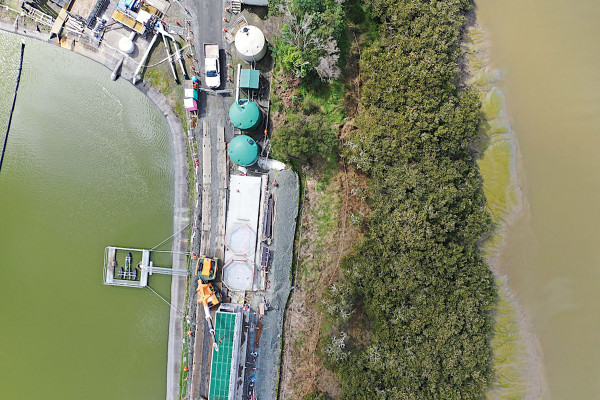

The amount of wastewater being collected and treated from Auckland’s north-west has increased significantly in recent years. To cater for this growth, prepare for the future, and free up the Māngere Wastewater Treatment Plant, Fletcher Construction and Brian Perry Civil are helping to deliver the $108 million Northern Interceptor Project. This will see a new wastewater pipeline direct flows from Massey North, Whenuapai, Hobsonville, Kumeu, Huapai and Riverhead to the Rosedale Wastewater Treatment Plant on Auckland’s North Shore.
The Northern Interceptor will contribute significantly to the protection of public health, environmental quality, and the social, cultural and economic well-being of the area.
Construction started in January 2019. There are five planned phases in the project. The first is complete and the remaining four phases are scheduled to be delivered in-part by Fletcher Construction as part of the Watercare Enterprise Model over the next 10 years.
By the numbers:
• Seven kilometres of wastewater pipe and four kilometres of watermain
• One causeway widening on Greenhithe Bridge
• Two pipe jack tunnels under State Highway 18
• Three horizontal directional drill shots (twin 560 interior diameter) up to 900 metres
• Two to three pipe bridges
• One NH2 watermain pipe slung/fixed under the existing Greenhithe Bridge
| Client | Watercare Services Limited |
|---|---|
| Budget | $108 million |
| Completed | Under construction |







Responding to what was then the most extreme drought in the Auckland region in modern times, Watercare activated an emergency drought response project to deliver an additional 50 million litres of treated water per day from the Waikato River. The entrant organisations collectively designed, consented, procured, constructed and commissioned a new water treatment plant in 12 months, a process that would normally take four years.
The complex and rapid nature of the programme presented unique challenges. These were addressed through innovative digital engineering that contributed to the success of the project: completion on time and under budget, without compromising environmental outcomes. An additional water source for the region was required to maintain water security and reduce the need for further water restrictions.
Fletcher Construction and Brian Perry Civil employed innovative digital techniques to manage bulk earthworks and produce erosion and sediment control plans, where a lack of accurate and up-to-date topographical and aerial imagery existed for the site. Topographical survey data and digital tools were used to design sediment retention ponds that were accurately constructed with GPS-enabled excavators. 3D as-built models of the erosion control devices were used to confirm compliance with design criteria and sediment control guidelines.
| Client | Watercare Services Limited |
|---|---|
| Budget | $89 million |
| Completed | June 2021 |



The disused Papakura Water Treatment Plant was reinstated as part of Watercare’s drought management plan. Built over two stages, the project plays a vital role in boosting water supply resilience to Auckland.
In stage one, Brian Perry Civil constructed a temporary treatment plant, taking water from the Hays Creek Dam, along with a pipeline to connect it to the network. Collaborating with the designer, we mitigated critical risks and provided innovative solutions to expedite the programme during early contractor involvement. In just 61 days we built an operational water treatment plant providing Aa-graded drinking water to Auckland residents.
We installed 150 tonnes of water treatment equipment, including:
- Nine new tanks, four granular activated carbon containers, a UV treatment container, a flocculation clarifier system, and containerised chemical dosing systems.
- All site run PE and stainless-steel pipework, and electrical cable and tray.
- We also completed difficult structural repairs to existing reservoirs and new interconnecting and outlet pipework.
The project demonstrates BPC’s technical excellence, collaboration, innovation, and exceptional health and safety standards, bringing tangible relief to the Auckland community.
| Client | Watercare Services Ltd |
|---|---|
| Budget | $10 million |
| Completed | May 2020 |




January 2020 saw two critical sludge pipes lose pressure and fail, forcing Wellington Water (WWL) to transport sludge by truck 24/7.
January 2020 saw two critical sludge pipes lose pressure and fail, forcing Wellington Water (WWL) to transport sludge by truck 24/7. Investigations revealed a pipe burst 250m inside the Mt Albert tunnel. This was a gravity pipe carrying wastewater to the city’s water treatment plant, buried deep under the city’s town belt.
Built to last at least 80 years, WWL did not expect one, let alone two, sludge lines to fail with an earthquake the probable cause. Both ruptured pipes were encased in a concrete surround within a 1.85km long tunnel running from Island Bay to Lyall Bay. The tunnel had only one access shaft and shutting down the feeding pump station for longer than an hour was impossible. Further complicating the situation was the fact that repairs needed to be made remotely.
WWL engaged Brian Perry Civil and Stantec to design a solution. The project team concluded a full pipeline liner was the most appropriate repair method. Two 1.8km liners were procured from Amex Samivar in Germany, the longest it had ever produced. Working seven days a week during the COVID-19 level 4 lockdown, BPC’s crew ensured the site was ready for the liners’ arrival and arranged for five Amex technicians to come to New Zealand to assist with the installation.
On May 21, the first pipeline was switched back on with the second pipeline repaired in June. BPC then moved on to the second stage of the project to repair damaged sections of concrete 250m from the tunnel access point. Communication and ventilation systems were installed to provide safe access to the challenging confined space for this work. A comprehensive community engagement programme also saw the project team working with closely with residents to address their needs and concerns.
| Client | Wellington Water Limited (WWL) |
|---|---|
| Budget | $7.6 million |
| Completed | March 2020 |
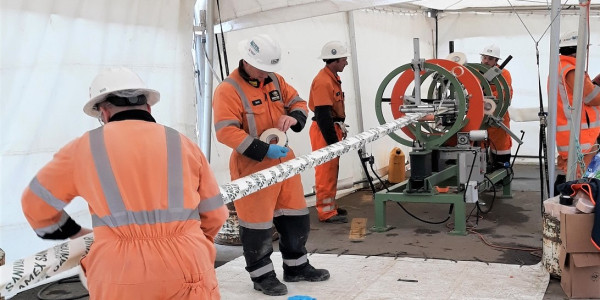

Wellington Water Ltd (WWL) engaged GHD consulting engineers to design a combined drywell/wetwell pump station and rising main pipeline. This involved constructing a new 6.5-metre diameter, 7-metre deep underground pumping station, including mechanical fit-out, and 175 metres of new rising main on a contaminated site. Brian Perry Civil provided an innovative solution based on the segmental precast caisson system.
The project involved working from the top down with a pre-made segmented ‘jigsaw’ of concrete panels—the first time such an approach is believed to have been completed in New Zealand. This approach meant there was no requirement for large scale temporary works (shoring). That's because the caisson method uses the absolute minimum footprint of the excavation, without over-digging for working space, reducing the volume of material to be excavated. Another benefit was minimising the volume of contaminated material, from the high levels of petro-carbon contaminants in the groundwater, that had to be removed.
The central city site created many challenges that the segmental caisson system helped overcome. This system is constructed in one metre increments at ground level and then pushed into the ground using hydraulic jacks. With no vibration effects from this method, the danger to adjacent structures (including a three-storey unreinforced masonry structure) was overcome. The system also helped overcome the risk of excessive noise for residents and businesses. A vulnerable tree within one metre of the site was saved by moving the location of the pump station by 300mm. Careful planning also ensured two lighting columns within one metre of the new structure were able to be retained during the project.
Another challenge came from discovering significant differences from the records provided, including much deeper banks of cable than had been anticipated in the original design. A directional drilled solution that minimised risk to underground services and traffic management was employed.
Using innovative solutions and out-of-the-box thinking turned difficult challenges into a real success story on this project. Brian Perry Civil’s innovation was recognised with a Civil Contractors New Zealand’s Branch Construction Award in May 2019.
| Client | Wellington Water |
|---|---|
| Budget | $2.46 million |
| Completed | May 2019 |






With an ageing stormwater culvert in the centre of Browns Bay reaching the end of its useful life, Auckland Council faced a significant challenge: how to repair the pipeline without disruption to surr...
With an ageing stormwater culvert in the centre of Browns Bay reaching the end of its useful life, Auckland Council faced a significant challenge: how to repair the pipeline without disruption to surrounding residents and traffic?
With the pipe running directly under roads and properties, repairs via open-cut methods were simply not an option. Pipeworks developed a remediation strategy that saw 60 metres of the 1350mm diameter concrete culvert lined with cured-in-place-pipe, enabling the pipeline to be repaired with minimal disturbance to surrounding residents and without the need for road closures. To maintain maximum flow volumes, Pipeworks used a 33mm thick I-Plus liner to line the pipe.
Unique aspects of the project include:
The culvert followed the course of an existing stream meaning there was a constant flow of water – even in dry weather.
As the only means of access to the pipe was via a number of back sections, Pipeworks used a large crane to lift the liner in place in front of the culvert.
With no space to impregnate and invert the liner on site, Pipeworks impregnated the liner offsite and inverted it into a pre-liner. The pre-liner was then transported to site, pulled in to place and inflated – a complex and logistically challenging operation. This was the largest liner ever pulled into position in New Zealand.
| Client | Auckland Council |
|---|---|
| Budget | $400,000 |
| Completed | May 2015 |
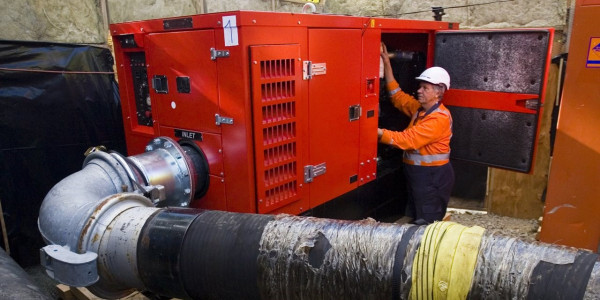

Remuera was largely farmland when the Branch 1 sewer was laid in Remuera in 1903.
Remuera was largely farmland when the Branch 1 sewer was laid in Remuera in 1903. But with the suburb now home to some of New Zealand’s most expensive properties, and the ageing sewer needing repair, trenchless rehabilitation was the only option.
Pipeworks used cured-in-place-pipe (CIPP) technology to reline a 530m long egg-shaped section of the sewer, whereby a resin-soaked ‘sock’ was installed inside the 900mm x 600mm brick and concrete structure. The resin was cured using hot water. The snug internal fit provides a permanent barrier inside the old sewer, keeping it watertight without significantly reducing the diameter and capacity of the pipe.
Pipeworks selected a thin I-Plus (fibre-reinforced) liner for the lining, as it provided the required strength with minimal reduction to the pipe’s diameter to maximise flow volume.
The heavily built-up environment added significantly to the challenge. The CIPP liners were installed 'blind' through 12m deep 900mm x 800mm chimney manholes. As these manholes were positioned in a major arterial road, significant traffic management was required.
Branch 1 is an integral component of the Auckland wastewater network, so prior to starting rehabilitation works Pipeworks installed an extensive bypass pumping system to capture all dry and wet weather flows. A section with a capacity of 250 l/s system was installed by horizontal directional drilling (HDD) under Remuera Road.
| Client | Watercare Services |
|---|---|
| Budget | $2 million |
| Completed | June 2014 |
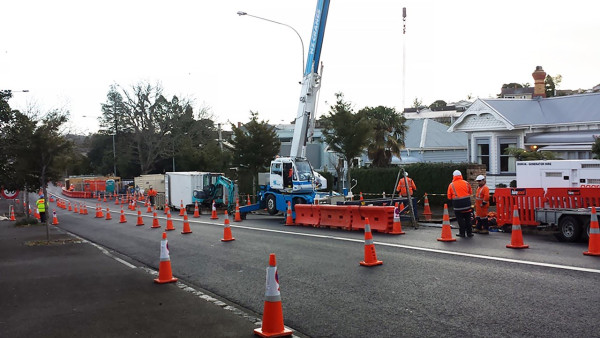

Constructed in 1910, the Orakei sewer is a critical piece of Auckland’s wastewater infrastructure, carrying sewage from Auckland’s central western suburbs to the wastewater tunnel at Hobson Bay.
Constructed in 1910, the Orakei sewer is a critical piece of Auckland’s wastewater infrastructure, carrying sewage from Auckland’s central western suburbs to the wastewater tunnel at Hobson Bay. A 250m section carries the pipeline under the Stanley Street motorway onramp, through the Auckland Domain and under the Auckland Tennis Centre. Overtime the structural integrity of the egg-shaped 2.4m x 1.5m structure had become severely compromised, requiring urgent repair.
Pipeworks developed two proposals for the relining of the pipeline: a CIPP (cured in place pipe) liner option and a glass reinforced pipe (GRP) alternative. Although the CIPP option offered significant cost advantages, the GRP option was selected because of the reduced risk profile. Pipeworks constructed a temporary pump station and rising main to enable bypass pumping of the pipeline, before relining the sewer using 25mm thick sections of GRP.
The rehabilitation works extended the life of the pipeline by 50 years.
Unique aspects of the project include:
- The project involved one of the largest and most challenging by-pass pumping operations in the country - more than 800 litres per second of raw sewage using submersible pumps.
- Construction of a 7m deep insertion pit.
- The GRP sections were installed during the wet winter season.
- Construction of an 8.5m deep pump pit to accommodate the by-pass pumps.
| Client | Watercare Services |
|---|---|
| Budget | $5.2 million |
| Completed | May 2014 |
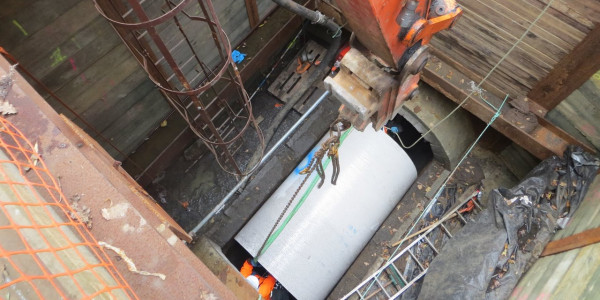

The harsh environment in wastewater treatment plants can cause significant damage to internal concrete structures over time.
The harsh environment in wastewater treatment plants can cause significant damage to internal concrete structures over time. Napier City Council engaged Pipeworks to coat and line tanks and concrete structures in its Awatoto Wastewater Treatment Plant to protect them from Hydrogen Sulphide and other corrosive gases.
Pipeworks used a two-stage rehabilitation process to protect the wet wells, effluent channels and grit channels, chambers and outlet channels. First a layer of fibreglass was glued and bonded to the existing concrete surface. Then a chemical resistant epoxy Novolac lining system was applied to provide a smooth and durable finish.
The rehabilitation works will extend the life of the wastewater treatment plant by at least 50 years.
The project had unique aspects:
- Works in wet wells and effluent channels required careful planning and special equipment due to the confined space.
- The epoxy liner and fibreglass sheets were applied from a scaffold, and entry to the chambers was via a small 800mm x 800m opening.
- Following completion of the works, the coated areas were tested using high voltage tHoliday Testing' to detect pinholes and other minor defects.
- The epoxy liner was applied in most areas with a spray gun and where a thicker application was required, a trowel was used.
| Client | Napier City Council |
|---|---|
| Budget | $300,000 |
| Completed | August 2013 |
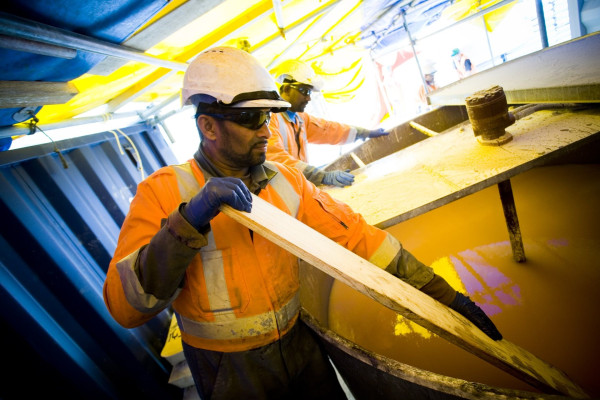

Due to being one of New Zealand’s earliest cities, many of Christchurch’s sewers were built before the invention of precast concrete pipes, using unreinforced brick and concrete.
Due to being one of New Zealand’s earliest cities, many of Christchurch’s sewers were built before the invention of precast concrete pipes, using unreinforced brick and concrete. As with brick buildings, these brick sewers are particularly vulnerable to seismic activity and some were severely damaged during the 2011 and 2012 earthquake. This highlighted the vulnerability of the infrastructure, and the need for strengthening and earthquake proofing.
Replacing the sewers would have caused major disruption to traffic and the community, so SCIRT opted to rehabilitate most of the pipelines using cured-in-place-pipe technology (CIPP).
Pipeworks relined the egg-shaped and elliptical pipes, which vary in diameter from 450mm to 1,350mm, using a very thick structural liner to protect them from future earthquakes and liquefaction. With many of the pipes running down major arterial roads, careful logistics planning and extensive traffic management was required.
All sections of CIPP liner were installed to a high standard, with minimal disruption to traffic and surrounding residents. The scale of work to be completed made this the largest CIPP project ever undertaken in New Zealand. Due to the sheer volume of work, the CIPP liners had to be installed three times faster than normal – faster than any other large diameter CIPP project in Australasia.
The project had numerous unique aspects:
- All of the pipes were more or less permanently flooded
- Bypassing of sewer flows of up to 300 litres per second – pumped above and below ground in busy streets
- Major alterations to large manholes up to 4m deep were required including well pointing and trench shields
- All resin mixing was undertaken inside the "Red Zone" to reduce risk
- Confined space entries were required to open laterals in certain pipes.
Photo courtesy of Water New Zealand
| Client | Stronger Christchurch Infrastructure Rebuild Team (SCIRT) |
|---|---|
| Budget | $13 million |
| Completed | June 2013 |
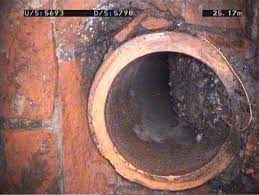

Our construction of the South Western Interceptor in 1997 saw the first use of large diameter micro-tunnelling techniques in New Zealand.
Our construction of the South Western Interceptor in 1997 saw the first use of large diameter micro-tunnelling techniques in New Zealand.
We used a tunnel boring machine to install two km of 1900mm diameter pipeline in an environmentally sensitive area adjacent to the approach path to Auckland Airport.
Fifteen years later, we extended the pipeline to Manurewa to accommodate rapid population growth in Auckland’s southern suburbs.
Due to the complex ground conditions we used three different methodologies to install the 2.3km, 900mm diameter wastewater pipe: open trenching, directional drilling and pipe jacking. A tunnel boring machine was used for the pipe-jacking section.
We also constructed a new pump station to replace the one at Manukau’s Wattle Farm Reserve, which had reached the end of its serviceable life. The pump station was constructed using in-situ reinforced concrete wet-and-dry-well internal walls and pre-cast panel roof.
The project involved significant mechanical and electrical works, including installation of four 320Kw pumps, numerous 700-900mm diameter valves, pipework, HVAC system, cooling water system and odour removal. The project team was also responsible for managing the sub-contract electrical works, which included installation of a new control system, cabling, switchboard and float switches.
The extension to the South Western Interceptor and the new pump station provided for future growth in South Auckland in as well as reducing the frequency and volume of wastewater overflows to the Manukau Harbour.
| Client | Watercare Services |
|---|---|
| Budget | $21 million |
| Completed | February 2012 |
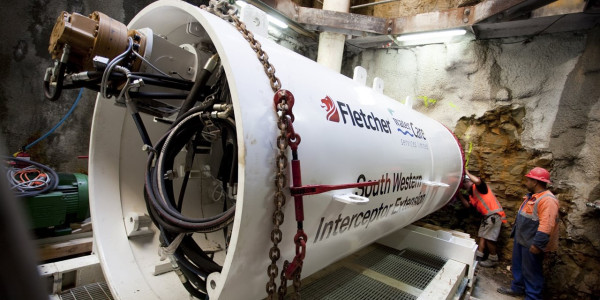

For 90 years, 25% of Auckland’s wastewater was carried via an unsightly concrete sewer pipe across Hobson Bay to the Mangere Wastewater Treatment Plant.
For 90 years, 25% of Auckland’s wastewater was carried via an unsightly concrete sewer pipe across Hobson Bay to the Mangere Wastewater Treatment Plant. As the city’s population grew, the pipeline strained to cope with demand and frequently overflowed into Hobson Bay.
We replaced the ageing pipeline with a 3km long, 3.4m diameter sewerage tunnel running 35m below sea level from Parnell to the Orakei Domain. The new tunnel provides significant additional capacity to support future growth and virtually eliminates overflows – leaving the bay open to use for swimming and boating. The tunnel connects to a new, higher capacity pump station.
The pre-cast concrete segmental-lined sewer tunnel was excavated using an earth pressure balance tunnel boring machine – the first of its scale and type in New Zealand. This allowed the tunnel to be built at a shallower depth in weaker ground conditions, thus reducing the project’s whole-of-life cost. Importantly, in the high-density urban environment, tunnelling also reduced impacts on surrounding residents.
We constructed the 22m diameter, 37m deep permanent access shaft in Orakei Domain, built new pump stations and demolished the existing pipeline, while McConnell Dowell bored the tunnel itself.
| Client | Watercare Services Limited |
|---|---|
| Budget | $114 million |
| Completed | August 2010 |




The largest environmental restoration programme ever undertaken in New Zealand, the upgrade of Watercare Services’ wastewater treatment in Mangere, reduced pathogens in the treated wastewater by 10,00...
The largest environmental restoration programme ever undertaken in New Zealand, the upgrade of Watercare Services’ wastewater treatment in Mangere, reduced pathogens in the treated wastewater by 10,000 times, raising water quality in the Manukau Harbour to its highest level since the 1930s.
The removal of the oxidation ponds not only enabled the restoration of coastal tidal flats and the rehabilitation of 13 kilometres of coastline, it also means the harbour is no longer used as part of the treatment process.
We joined forces with Civil & Civic to upgrade the existing wastewater treatment plant to meet improved discharge standards, including construction of a new advanced treatment facility, ultra-violet disinfection facilities, new biosolids facilities, upgrade of existing power supply, demolition of redundant plant, decommissioning 500Ha of oxidation ponds and foreshore restoration. The new treatment plant uses world-leading technology and has the capacity to cater for Auckland’s growing population for approximately 30 years.
Handling over 319 million litres of wastewater every day, Mangere is New Zealand’s largest wastewater treatment plant and therefore, any disruption to normal operations was simply not an option. The plant remained fully operational as the new facility was built, required a carefully staged construction and commissioning approach and astute stakeholder management.
| Client | Watercare Services Ltd |
|---|---|
| Budget | $324 million |
| Completed | December 2003 |
